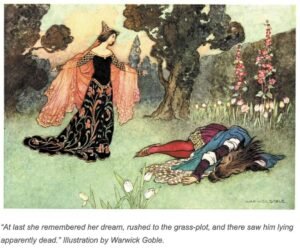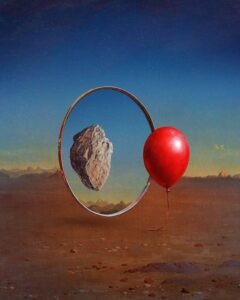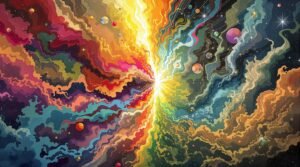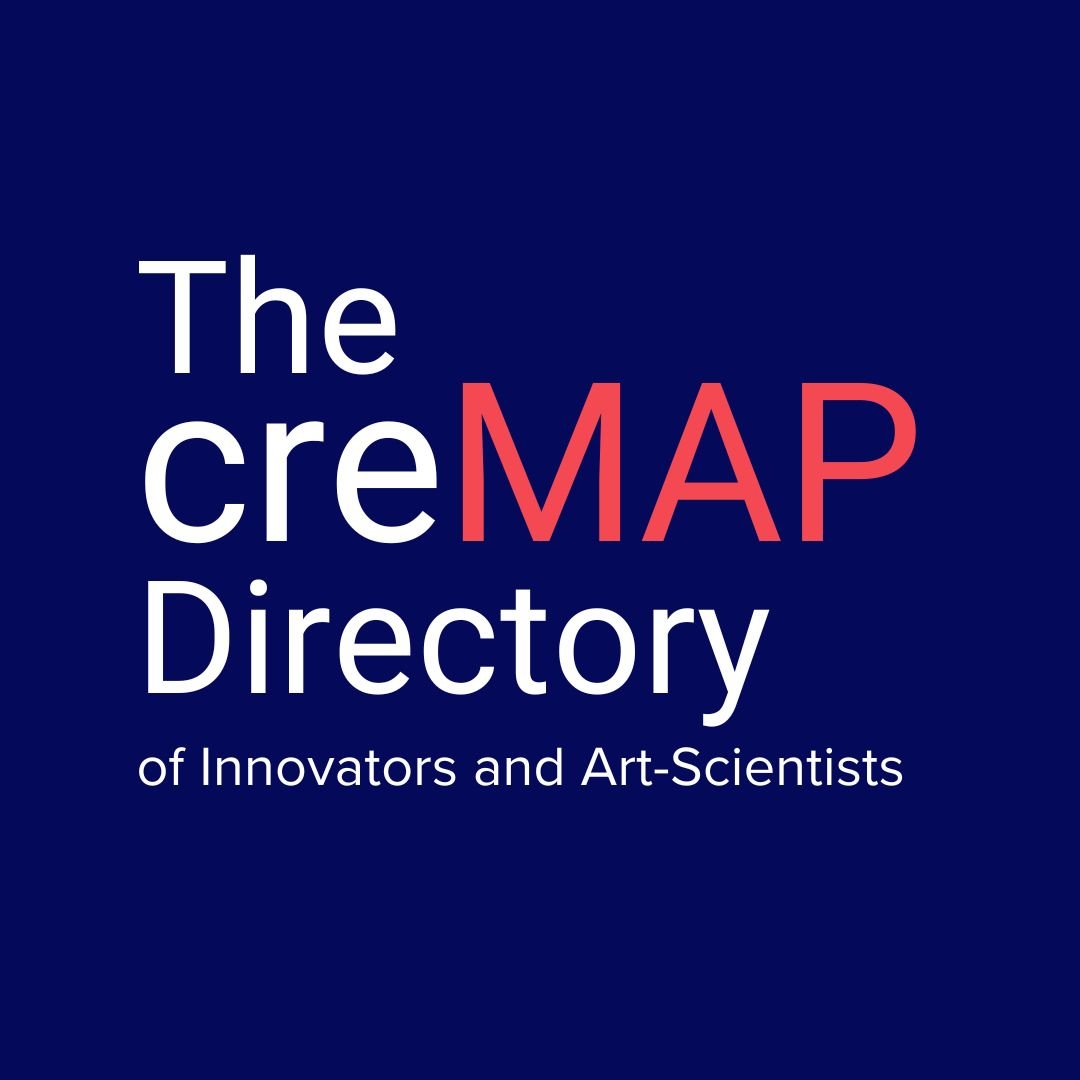At the intersection of neuroscience and art, Eden Redman is learning to navigate complexity. A master’s student in the Integrated Program in Neuroscience at McGill University, Eden researches computational models of visual attention and perception, alongside translational work related to neurodegenerative disorders. Outside the lab, his creative practice spans semi-abstract painting, drawing, multimedia, and sculpture. While these might appear to be separate pursuits, for Eden they are tightly linked by a common thread: grappling with complexity.
Beyond Bureaucracy: Seeking New Pathways
Eden’s early interests in evolutionary biology and psychology introduced him to the wonder of scientific exploration—but also to the frustrations of rigid academic structures. “I pretty quickly came up against the wall that is bureaucracy,” he reflects. This limitation pushed him to expand his focus beyond individual research questions and toward the systems in which knowledge and innovation unfold.
Community building, he explains, became a natural extension of his scientific and artistic instincts. By convening people across disciplines, he hopes to create environments where innovation emerges organically, not just through institutional hierarchies. In this sense, navigating complexity is as much about people and systems as it is about data or brushstrokes.
Art and Science as a Shared Coin
Rather than seeing art and science as opposites, Eden imagines them as “different sides of the same coin.” In practice, this means using art for divergent exploration—probing ideas freely, without immediate boundaries—while using science for convergent rigor. “It’s kind of like chocolate and peanut butter,” he says. Each has value on its own, but together they produce unexpected richness.
Of course, this interplay isn’t always simple. He admits that moving between disciplines can feel like “getting lost in the sauce,” where the sheer variety of perspectives and methods can become overwhelming. Yet for Eden, this tension is precisely where the most fruitful work happens.
Embracing Discomfort
Complexity, by its nature, resists neat answers. Eden sees discomfort and conflict not as problems to avoid but as necessary preconditions for creativity. “I do find tension and to a certain degree discomfort are the necessary preconditions for thinking and creating outside of the box,” he explains.
For him, navigating complexity in art-science thinking means leaning into this friction—allowing differences in worldview to spark conversation and reveal new perspectives. Whether in a lab meeting, an art studio, or a community hackathon, healthy conflict can act as a catalyst for discovery.
Value at the Boundaries
One of Eden’s recurring observations is that real breakthroughs often emerge “at the fuzzy boundaries between domains.” The sharper and more rigid those disciplinary borders become, the harder it is for fresh ideas to take root.
His own practice illustrates this principle. In his Convergence project, he compared brain dynamics during and after stroke recovery with the changing connectivity of our global information landscape. By linking two seemingly unrelated systems, he invited viewers to grasp complex neuroscience concepts through analogies with more familiar experiences. This method, he explains, helps people bootstrap their understanding of unfamiliar systems by connecting them to intuitive ones.
Building Communities for Complexity
Eden’s commitment to navigating complexity extends beyond his own art and research. Through community initiatives in Alberta and Montreal, he has supported hackathon-style programming that brings students, recent graduates, and community partners together to solve real-world challenges. These projects have led to clinical tools, market-ready hardware, and meaningful employment opportunities for trainees.
What matters most, however, is not just the outcomes but the environments created. “I like to create environments where people can have the space to openly explore complex issues across disciplines,” Eden says. These communities, he believes, are essential for training the next generation to work across boundaries rather than within silos.
Toward a Culture of Exploration
For Eden, navigating complexity in art-science thinking is ultimately about culture. Too often, he observes, postsecondary institutions cultivate a narrow worldview as disciplines grow more specialized. Counteracting that narrowing requires intentionally reaching across divides—whether between art and science, research and community, or theory and application.
This is not without risk. Bringing together people with dramatically different perspectives often sparks conflict. But Eden sees that as part of the process. “Sci-art has a lot of potential if we don’t constrain it to either science communication or just visual outputs,” he argues. At its best, it can spark new conversations, reconcile divergent worldviews, and generate solutions with real-world impact.
Eden’s reflections remind us that complexity isn’t something to be solved once and for all. It is something to be navigated—through conversation, through creativity, and through the willingness to work at the edges of disciplines. In his own way, he embodies what navigating complexity in art-science thinking looks like: blending rigor with imagination, creating communities of inquiry, and embracing the discomfort that comes with real innovation.




